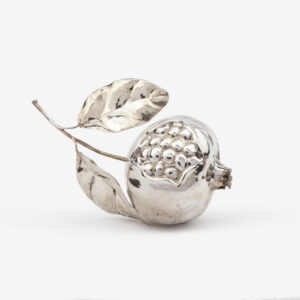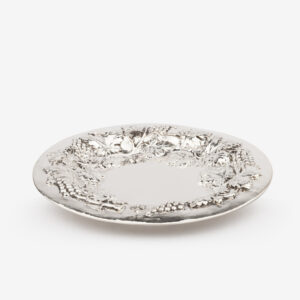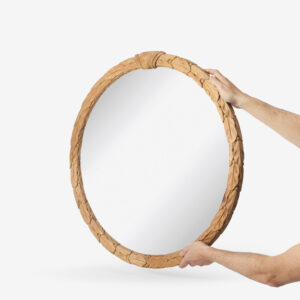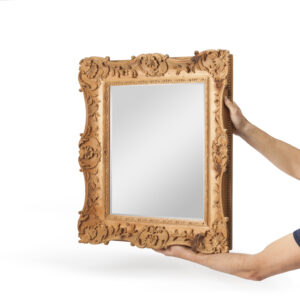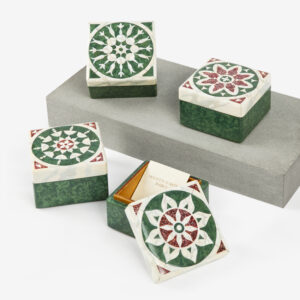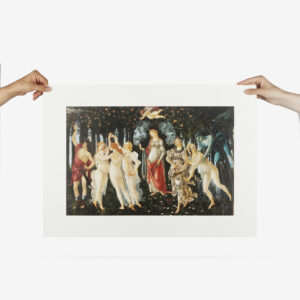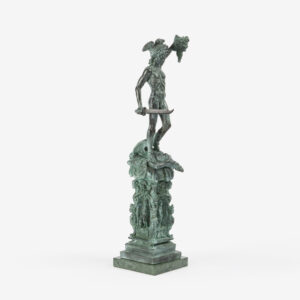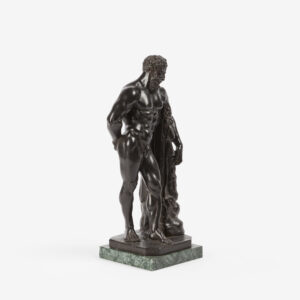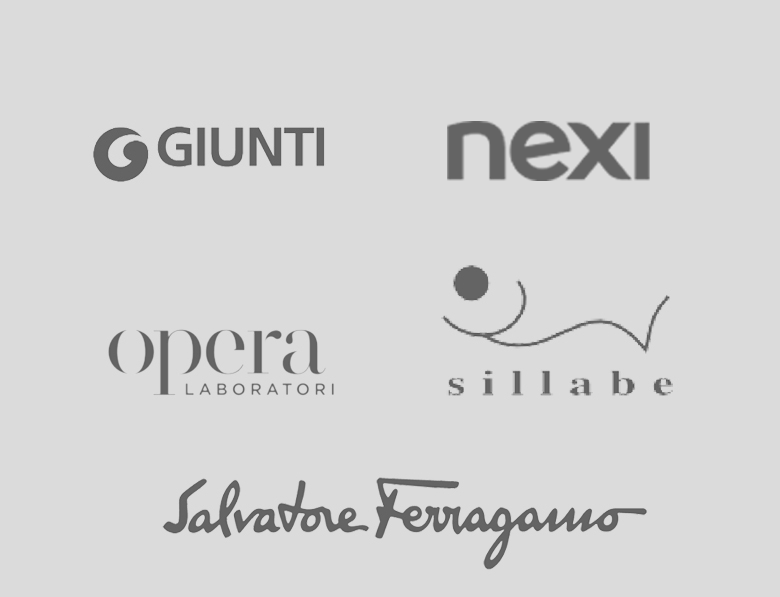ALTO ARTIGIANATO
for
Alto Artigianato is a project sponsored by the Uffizi Galleries, with the aim of selecting the finest craftsmen from the Florentine and Tuscan territory so as to showcase unique products and production processes, while recounting the excellence of our museums and of Italian-made craft products. From the dialogue established between artisans and the Museum, objects are created inspired by works, monuments, details and artists to be found in four institutions: the Uffizi Gallery, Palazzo Pitti, the Boboli Gardens and the Vasari Corridor. Our selection includes unique or limited edition pieces, designed and made exclusively for this project. Silver artefacts, bronze castings, prints and lithographs, room fragrances, porcelain, carved wooden objects, embroidery, leatherwork and collectable coins.
Tuscany lays claim to an ancient and rich tradition in the artistic crafts. Our aim is to highlight the artisans, their work, their extraordinary skill, their mastery and the beauty of their creations. Florence, by heritage and vocation, is the Italian and international centre of artisanal production. This heritage has its roots in the early Middle Ages, with the founding of the first craft workshops, places of training, growth and transmission of knowledge, both technical and ethical. Craftsmanship is the reflection of a culture of technical know-how, which over the centuries has given rise to many objects that we now call Art. Purchasing one of our products, produced by local craftsmen in the respect of time-honoured traditions, does not only mean owning an object of excellence, but also supporting the social and economic fabric of the area, helping to keep such crafts and know-how alive. Valorising these realities contributes to critical and ethical consumption.
The first stage of the project foresees the involvement of six companies, each representing a different sector: Brandimarte, Fonderia Artistica Marinelli, Aquaflor, Bartolozzi e Maioli, Polistampa Firenze and Numismatica Ars Classica.
Aquaflor
Perfumers
Located in the heart of Florence, in the Santa Croce district, the Aquaflor perfumery house with its master perfumers creates unique fragrances, entirely and exclusively made inside the historic 16th century Corsini Antinori Serristori palace.
Aquaflor has developed an ambient fragrance for us inspired by the aromas of the Boboli Gardens, with green notes, such as the hedging, citrus notes, with particular attention to the citrus collection in the garden, and numerous floral notes. The result is the first official fragrance of the Boboli Gardens.
The most important essence is undoubtedly that of Jasminum sambac, also known as Arabian jasmine or Sambac jasmine. It was the favourite plant of Grand Duke Cosimo III de’ Medici, to whom it was given by King Peter II of Portugal. A beautiful plant with a rich, semi-double flowering, native to Goa and Ceylon, its unique aroma inspired Cosimo III, who used it to make flavoured chocolate pralines. It became famous in courts throughout Europe, and the Grand Duke placed the recipe under state secret to prevent its spread. The instructions for making the Grand Duke’s jasmine chocolate were finally found in notes written by Francesco Redi in 1712.
BARO FIRENZE
Home furnishings and decorations
Baro Firenze is a Florentine workshop where different kinds of objects are realized according to the styles that best characterized the Florentine Renaissance and Tuscan art. Since 1994 decorations faux wood and faux marble have been carried out on wooden items such as boxes, frames, tables and furniture, as well as wall paintings with the technique of trompe l’oeil (views, still lifes and more).
The objects of Baro Firenze, on sale in art shops in the center of Florence and in the bookshops of museums of Florence, Siena and the Vatican Museums, reproduce the marble and wooden inlay decorations of the most famous monuments and can also be made with motifs customized at the customer’s request.
The paint background is constituted from chalk and special glue, according to the traditional method of medieval painters, on which is later engraved the marquetry drawing with a brass pencil. The colour is then spread in successive phases, each time very diluted to simulate the marble, building up to fifteen layers.
BARTOLOZZI E MAIOLI
Wood carving
A workshop specialising in woodcarving since 1938. For three generations they have produced works of international calibre, such as the restoration of the rooms of Tsar Nicholas II in the Moscow Kremlin and the refurbishing of the Choir and Sacristy of the Abbey of Montecassino.
Together with Bartolozzi & Maioli, we have selected a series of frames, made entirely by hand, in the style typical of Florence in the late Renaissance and Baroque periods. Each frame is carved from solid wood, presented in its natural state or decorated with gold leaf. Bartolozzi e Maioli’s production is closely bound to the history of Florentine art. In fact, its founders spent years studying the original models in the Uffizi Galleries, filtering them through their own personal experience and adapting them to contemporary tastes.
BRANDIMARTE
Silversmith
The history of Brandimarte, an exquisitely Florentine business, began in 1955, the year Brandimarte Guscelli was founded. Today, the company continues its mission of bringing silver into everyday life, making precious household objects. Brandimarte is now led by Bianca Guscelli, the third generation of the family.
Brandimarte has created trays, fruit bowls and fruit stands for us with typically Renaissance festoon decorations in sterling silver. Chasing was selected for the typical festoon motif, also to be seen in the Gallery’s grotesques and on the façade of the Limonaia in the Boboli Gardens. Their resemblance to certain artefacts to be found in the general catalogue of the Uffizi Galleries is evident. For centuries, the art of chasing has been the preferred decorative technique for the creation of valuable furnishings. Indeed, this type of workmanship has deep roots in Florence. The Medici family commissioned many objects made using this technique.
FONDERIA ARTISTICA FERDINANDO MARINELLI
Bronze chasing and casting
An undisputed Florentine excellence, the Foundry is heir to a tradition that has been handed down from master to apprentice since the 16th century. Known for its faithful bronze replicas of Renaissance originals, now placed also in the city’s squares and streets, Fonderia Marinelli’s selection also includes small-scale replicas of sculptures from the Uffizi Galleries and under the Loggia dei Lanzi. All the subjects are bronze castings with different patinas and are placed on marble and bronze bases.
POLISTAMPA FIRENZE
Typography
Polistampa Firenze is the typographic brand of Mauro Pagliai’s Polistampa. The company is a multifaceted Florentine reality with its own publishing house, a section dedicated to the realization of cultural events and the management of the Niccolini Theater. The passion for art is what distinguishes the company and the activities of Mr. Pagliai, who collaborated with many artists of the ‘900 for the creation of photographic works, prints and drawings.
With Polistampa Firenze we worked on the production of a series of limited edition prints. In particular, we have selected the reproductions, on a reduced scale, of The Birth of Venus and The Spring by Sandro Botticelli from Le Gallerie degli Uffizi using high-level techniques and papers.
Related products
-
POMEGRANATE
€600,00€490,00 -
GRAPE TRAY
€5.000,00 -
ROUND NEOCLASSICAL FRAME
€3.700,00 -
RECTANGULAR 1700 FRAME
€5.200,00 -
THE SPRING
From: €35,00 -
PERSEUS WITH THE HEAD OF MEDUSA – GREEN
€4.600,00 -
HERCULES AT REST
€2.550,00

